For millennia, the knife has been an essential tool in our everyday lives to help accomplish tasks both large and small. They come in all shapes and sizes to fit every budget but rarely do you come across a brand that is both consistently good and affordable. Morakniv has been in the business for almost 130 years producing high-quality knives near the city of Mora, Sweden; in fact, Morakniv means “knives from Mora”. At SHOT Show 2019 I stopped into the Industrial Revolution booth to initially take a look at some of the UCO products but was quickly introduced to the new Morakniv Companion Spark. I was quite impressed with the knife and I finally got my hands on one of my own to test out this past summer.
A Little Backstory
I wouldn’t fault you if you looked at this knife and said: “Hey, that’s not new, I’ve seen it before!”. That’s kind of true because not too long ago, Morakniv and Light My Fire of Sweden collaborated on a similar knife that was made by Mora but sold by Light My Fire. When that relationship ended, Mora brought that knife back inhouse and redesigned it into what you see here. The changes were subtle but I feel they made the new Companion Spark a better all-around outdoors knife.
Overview
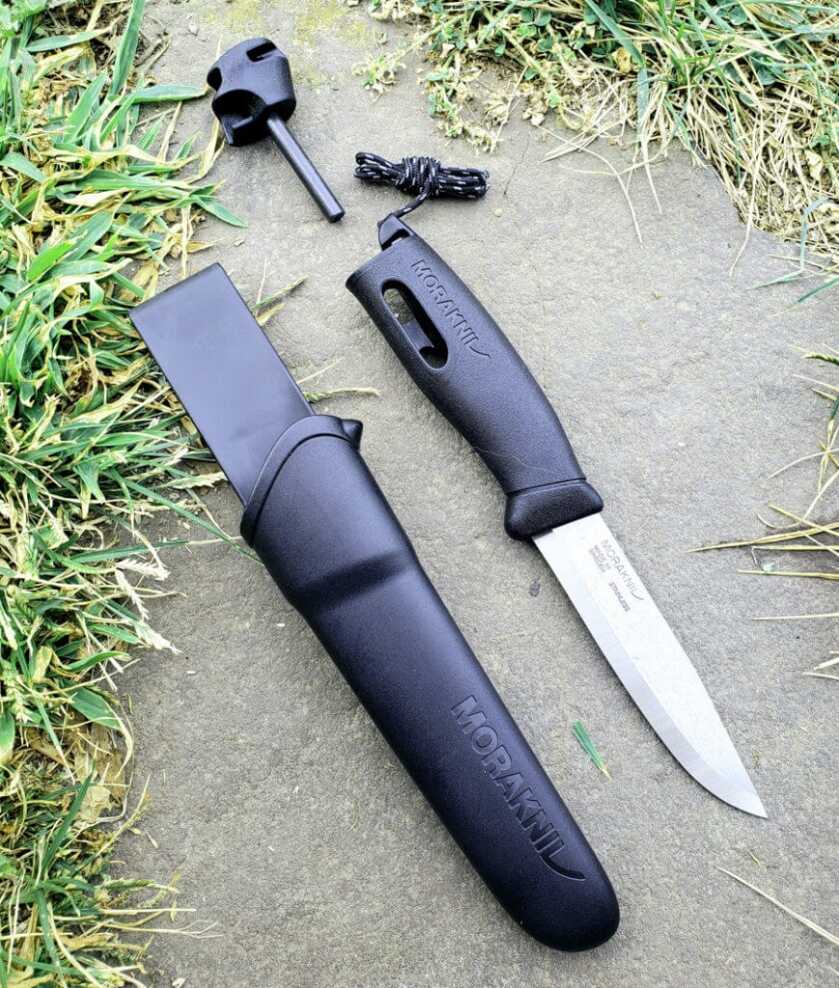
The overall length of the knife is 9.4” including the 3.9” long blade made from 12C27 stainless steel that is 2.5mm thick with a Scandanavian grind that is typical of many Mora knives. The Scandi grind is well known to be a user-friendly type of grind that is controllable, holds an edge well and is easy to maintain. The blade also features a 90-degree spine to be used in conjunction with a Ferro rod, convenient since one is built into the removable pommel.
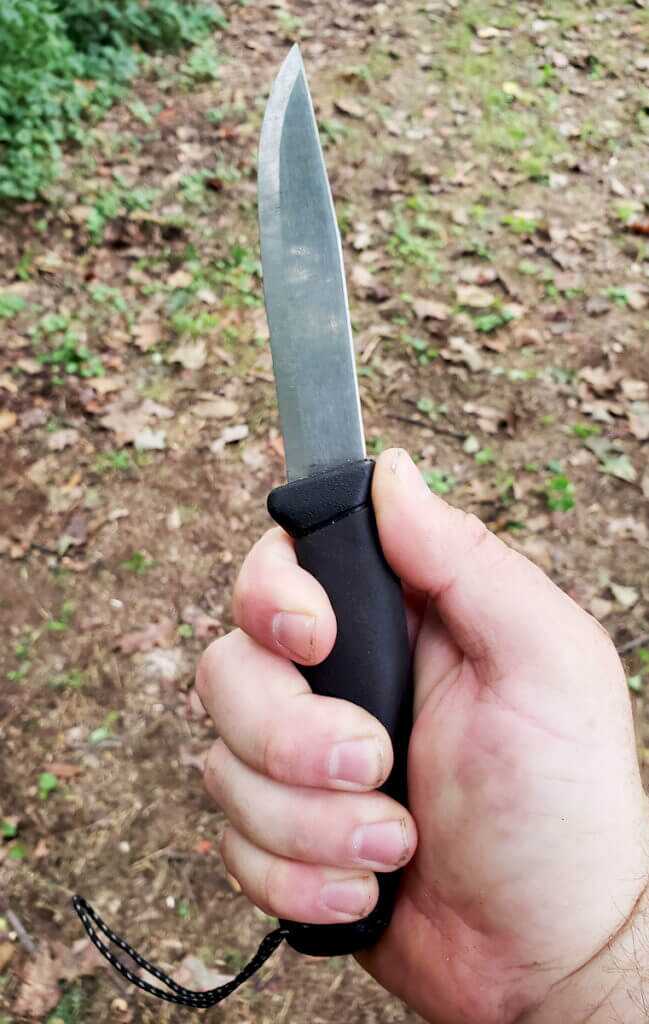
The handle has a familiar Mora shape that seems like it is ergonomic enough to fit most hands well. A rubberized over-molding on the grip helps to keep hands from slipping around in adverse weather conditions.

The single-piece plastic sheath is incredibly simple and I debated pointing it out at all but there were some features that I felt warranted attention. The first is the integral belt clip, it’s angled in such a way that when on the belt it tucks the blade in close to the body while making the handle easy to grasp. When the blade is in the sheath, it’s held in place securely by a detent that corresponds to the lower finger guard. It’s not exactly locked in but it’s not going to come out from moderate shaking or jostling either. A small ridge on the side of the sheath gives the thumb a spot to provide a little extra leverage to pop the knife past the detent and remove it easily.

Field Use
I’ve seen Mora knives get “tested” in some pretty extreme ways that I frankly found unrealistic so for me I thought it would be better to just use the thing like it was meant to be used. Out of the package, this knife was sharp, really sharp, which made my tasks around the house, in the kitchen, and out in the woods easier and more enjoyable. As they say, a sharp knife is a safe knife. One thing I immediately noticed when I clipped the knife on my belt was just how light it was. Before long I practically forgot it was there.
With the knife at my side, I decided to work on some basic field skills. I set up a temporary camp similar to what a lost hiker or hunter might do if they had to spend a night outside. I only had the Companion Spark and a Leatherman Wave in addition to some pretty minimal supplies in a small pack. This amounted to two bottles of water, snack bars, a pen, notepad, 550 cord, binoculars, a compass, and an emergency blanket. The knife made quick work of fashioning some sticks into stakes, cutting 550 cord, and eventually completing a plow point shelter.

Using the Leatherman’s saw to cut off a section of a branch to use as a baton, the Mora made quick work of splitting 1-1 ½” thick pieces of wood. They weren’t exactly logs, however, I’m confident the Companion Spark could’ve easily handled larger pieces.

I had accrued a pretty good pile of wood so I moved on to making some fuzz sticks to help the fire take off once I got my tinder going. To make fuzz sticks, you want to carve thin curls but you don’t want them to separate from the stick and this is where the sharp Scandi grind really helped.

To get the fire started I intentionally used only the paper from my notepad as tinder and the Ferro rod that’s in the handle of the knife. My intent was to start a fire the way someone that knew just enough to be dangerous might do it, instead of gathering proper tinder.
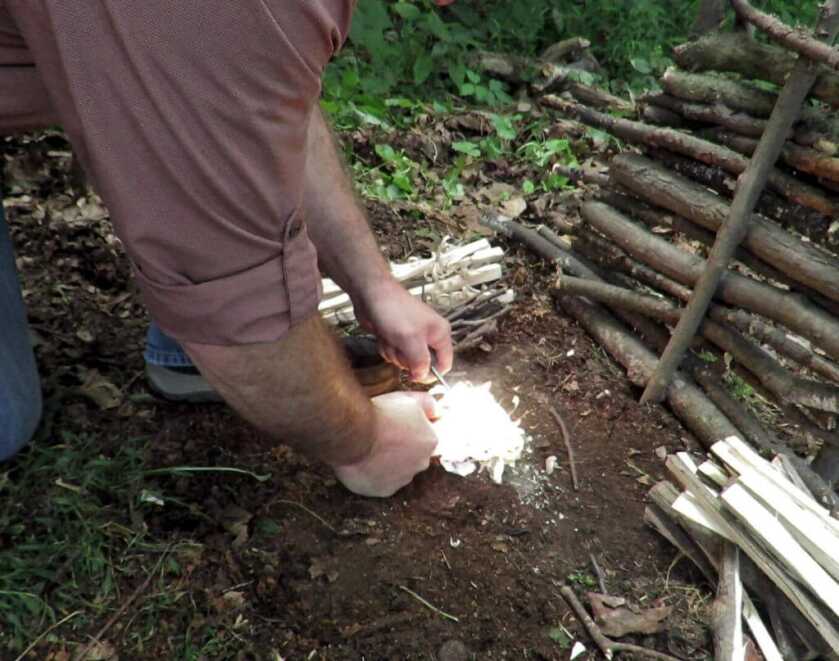
At first, I wasn’t sure if I’d be able to get a good grip on the Ferro rod but I found that to not be the case at all. The 90-degree spine threw some pretty intense sparks and I would say that in less than a minute the paper was alight followed shortly by crackling as the fire started growing. Granted this was just a simple exercise but it demonstrated that I could count on the knife to get me through an overnighter.

While I was outside I used the Spark to carve out some useful implements like a fork, a couple of spoons, and some gorge hooks. I don’t practice these skills enough so they’re admittedly a little rough around the edges but the important takeaway is that they were functional.
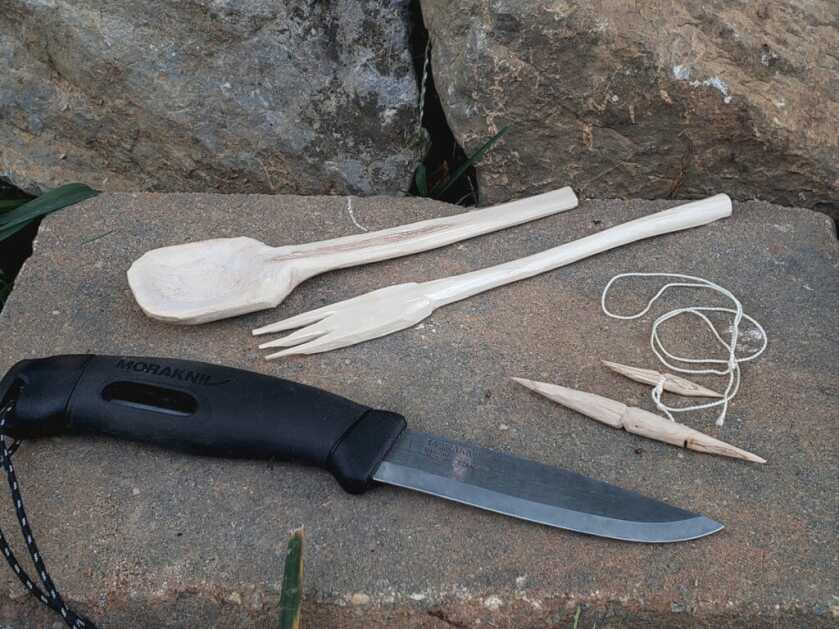
I understood the control aspect of the Scandi grind as I was able to use different parts of the blade to remove material in certain ways. The wider part of the blade was good for removing mass while I was able to use the belly to finely carve material away. To make the bowl of the spoon I plunged the tip into the wood and worked the belly around to create a divot that just got wider and deeper. That can be pretty hard on a blade but the Companion Spark took it with ease. The flat spine of the blade worked well to round off edges and give a smoother feel to the wood so just about every part of the blade got used somehow.
Sharpening
Up to this point I’d done a fair amount of cutting, notching, splitting, and slicing with the knife and yet it was still pretty sharp. Maybe not razor sharp but it cleanly sliced standard printer paper and 550 cord like it was going out of style.
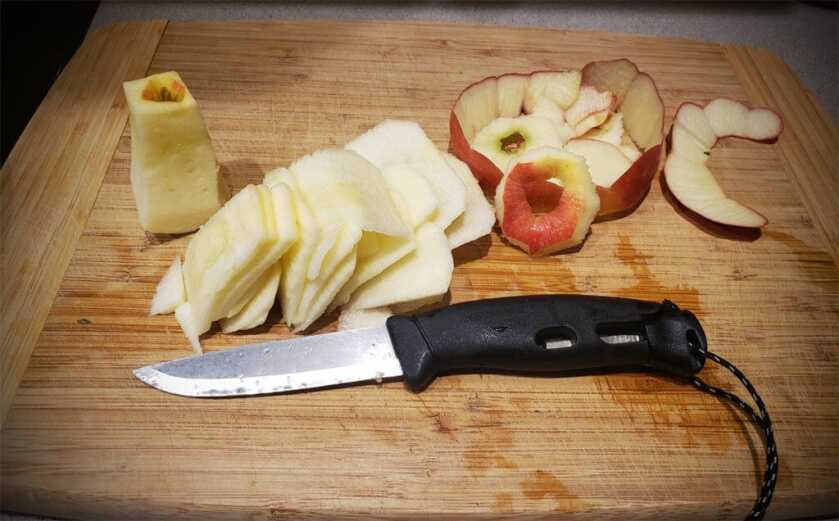
I’m not sure how long it’d take to really dull the knife from regular use but I have a feeling it’d take a while. I used an Arkansas stone to give the blade a little touch-up and after ten strokes on either side of the blade it was back to being razor-sharp again. I can’t express enough how easy the Scandi grind makes it to index and put a really nice edge on the blade.
Conclusions
Honestly, a knife that only cost $30 shouldn’t be this good but it is. It’s cheap enough that you can afford to have a few of them to keep in different places and know that they have the quality you can count on. They’re not just available in Black, currently, your color options include Blue, Green, Yellow, and Red so you can color-coordinate if you want to. I see the Companion Spark as the perfect starter knife for scouting, general-purpose use, and those interested in getting started in bushcraft.

